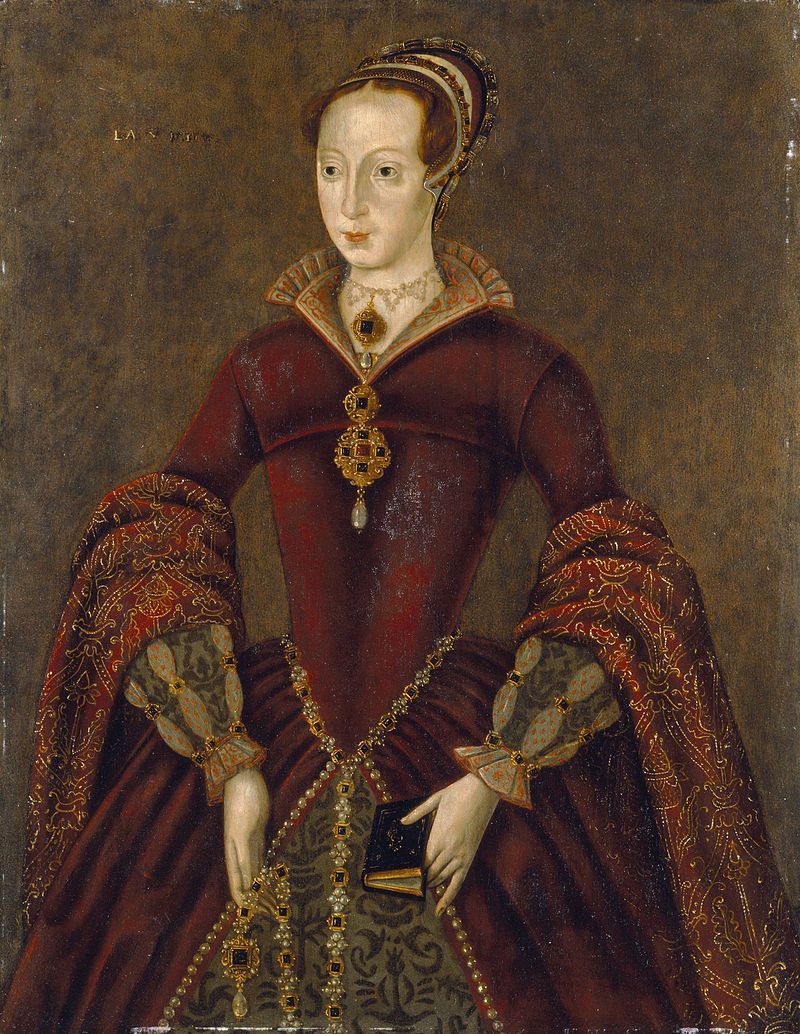Is This the Childhood Home of Lady Jane Grey, England’s Nine-Day Queen?
Stone structures unearthed below the brick ruins of Bradgate House may date to the Tudor period
/https://tf-cmsv2-smithsonianmag-media.s3.amazonaws.com/filer/e5/26/e526de47-95dc-45c0-996e-a56c681b537f/bradgate_house_-_geographorguk_-_883431.jpg)
Few figures in Tudor history evoke the same level of pathos as Lady Jane Grey, the short-lived queen who ruled for just nine days and lost her head to the executioner’s axe in 1554 when she was 16 or 17. But long before Jane emerged as a key player in the battle for England’s throne, she enjoyed a cultured—if not necessarily happy—childhood at her family’s ancestral seat in Leicestershire, establishing herself as a promising intellectual while learning languages including Latin, Greek, French and Italian.
Today, the only visible evidence of the Grey family estate is a series of brick ruins scattered across Bradgate Park. As Maia Snow reports for Leicestershire Live, however, archaeologists from the University of Leicester recently announced the discovery of stone structures hidden beneath the remnants of these brick buildings. Given the fact that the buried stones pre-date the brick ruins, it’s likely they belonged to an earlier iteration of Bradgate House perhaps once inhabited by England’s nine-day queen.
“While Bradgate House is such an iconic site, very little is known about the standing structure and how it changed over time,” project co-director Richard Thomas tells Snow. “Our evidence suggests that the home Lady Jane Grey would have recognized may have looked very different from what we see today.”
By all accounts, Bradgate was a luxurious estate: As historian John D. Paul writes in Bradgate House and the Greys of Groby: A Sketch of Their History, the home—first envisioned by Thomas Grey, eldest son of Elizabeth Woodville, England’s “White Queen,” from her first marriage to John Grey, and completed by his son, another Thomas Grey, around 1520—consisted of two wings united by a great hall used for feasts and entertainment. An enormous kitchen occupied most of the western wing, while the Greys’ private apartments and chapels stood in the eastern wing. Per Abandoned Spaces’ Bojan Ivanov, the mansion was enlarged and modified two decades after it was first built and again toward the end of the 17th century.
According to the Tudor Travel Guide, Jane’s parents, the Marquess and Marchioness of Dorset (the latter, Lady Frances Grey, was the daughter of Henry VIII’s youngest sister, Mary), likely moved to Bradgate in 1538, around two years after their eldest daughter’s birth. Jane spent much of her childhood in Leicestershire, but upon the formidable Tudor king’s death in 1547, she was sent to live with Henry VIII’s widow, Katherine Parr, and her new husband, Thomas Seymour, 1st Baron of Sudeley and uncle of the just-ascended Edward VI. (The couple married just months after the king’s passing to great scandal.)

Jane thrived under Katherine’s tutelage, developing a zeal for Protestantism and academic study. But her time with the dowager queen was brief: Katherine died in childbirth in September 1548, and her husband, clouded by accusations of impropriety and treasonous intentions, was executed less than a year later.
The young Jane, fourth in the line of succession following Henry VIII’s daughters, Mary and Elizabeth, and her mother, Frances, returned to Bradgate, where she continued her studies with tutor John Aylmer.
A letter written by Roger Ascham, a scholar who visited Bradgate in 1550, offers insights on Jane’s tense relationship with her parents. As quoted by Ascham, Jane reputedly said: “One of the greatest benefits that ever God gave me, is, that he sent me so sharp and severe parents, and so gentle a schoolmaster. For, when I am in presence either of father or mother, whether I speak, keep silence, sit, stand, or go, eat, drink, be merry, or sad, be sewing, playing, or dancing, or doing anything else, I must do it, as it were, in such weight, measure and number, even so perfectly as God made the world; or else I am so sharply taunted, so cruelly threatened.”
It’s worth noting, according to historian Leanda de Lisle, author of The Sisters Who Would be Queen: Mary, Katherine & Lady Jane Grey, that this anecdote dates to 1570 and may have been embellished in lieu of Jane’s ultimate fate; Aylmer, for his part, characterized Jane as a highly spirited individual, noting she “was at that age [when] … all people are inclined to follow their own ways.”
The remainder of Jane’s short life is well-documented. Married to Guildford Dudley, son of John Dudley, the Duke of Northumberland and the true power behind Edward VI’s throne, in May 1533, she soon found herself at the center of a plot to usurp the crown from the rightful heir, the Catholic Mary Tudor. Upon Edward’s death in July of that year, Northumberland had Jane declared queen, preserving England’s status as a Protestant country while conveniently maintaining his own level of influence.
Unfortunately for Northumberland, the people were reluctant to embrace the little-known Jane over the then-popular Mary, and nine days after the young queen assumed the throne, she was overthrown by Mary and her supporters. Although the newly crowned Tudor queen appeared poised to pardon her young cousin, a second rebellion led by Jane’s father—as well as the deposed queen’s own unflappable Protestant convictions—sealed her fate, and she was beheaded on February 12, 1554.
Bradgate House’s most famous resident may not have lived there for very long, but the site of the once-great estate continues to wield fascination for those interested in the story of the tragic nine-day queen. As Snow reports for Leicestershire Live, excavations, conducted under the purview of the Bradgate Park Fieldschool, began in 2015 and are set to conclude this month.
Moving forward, project co-director Richard Thomas explains in a University of Leicester statement that the team will attempt to date the construction and demolition of the newly detected stone structures. “We also hope,” Thomas continues, “to find evidence that tells about the living standards of one of the most important families in Tudor times.”
/https://tf-cmsv2-smithsonianmag-media.s3.amazonaws.com/accounts/headshot/mellon.png)
/https://tf-cmsv2-smithsonianmag-media.s3.amazonaws.com/accounts/headshot/mellon.png)